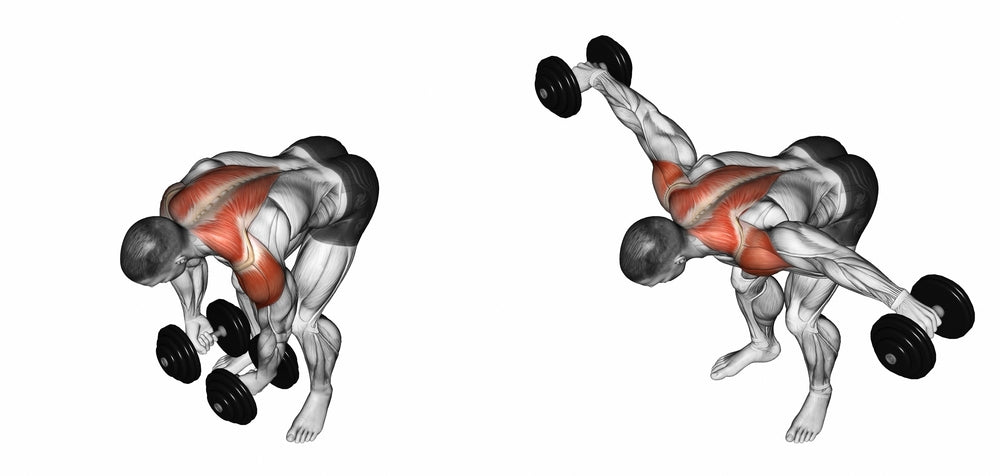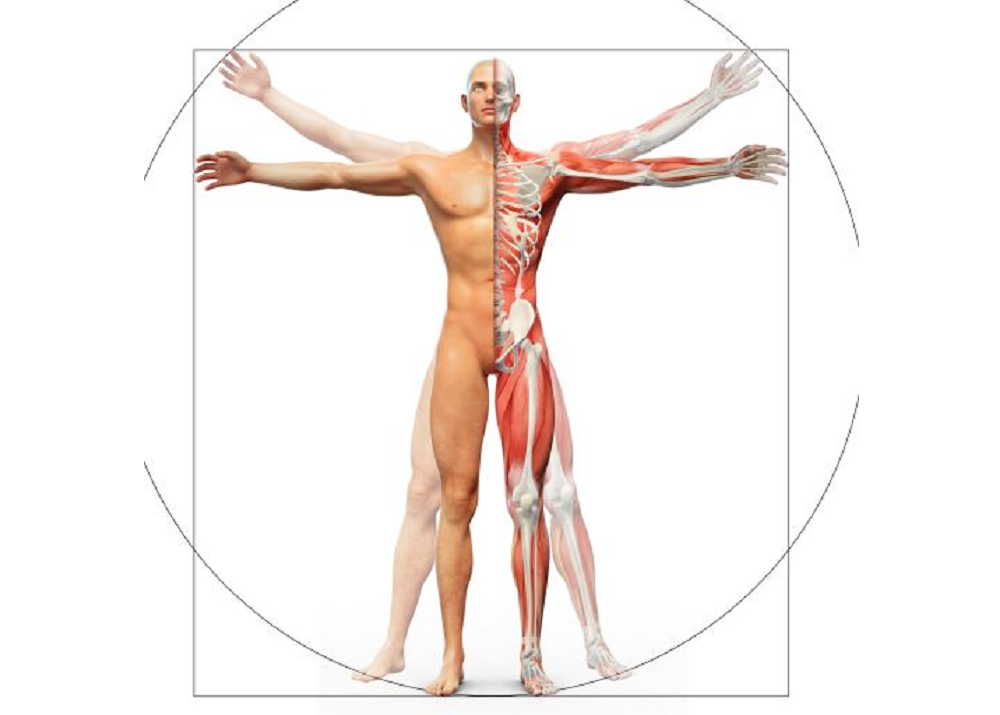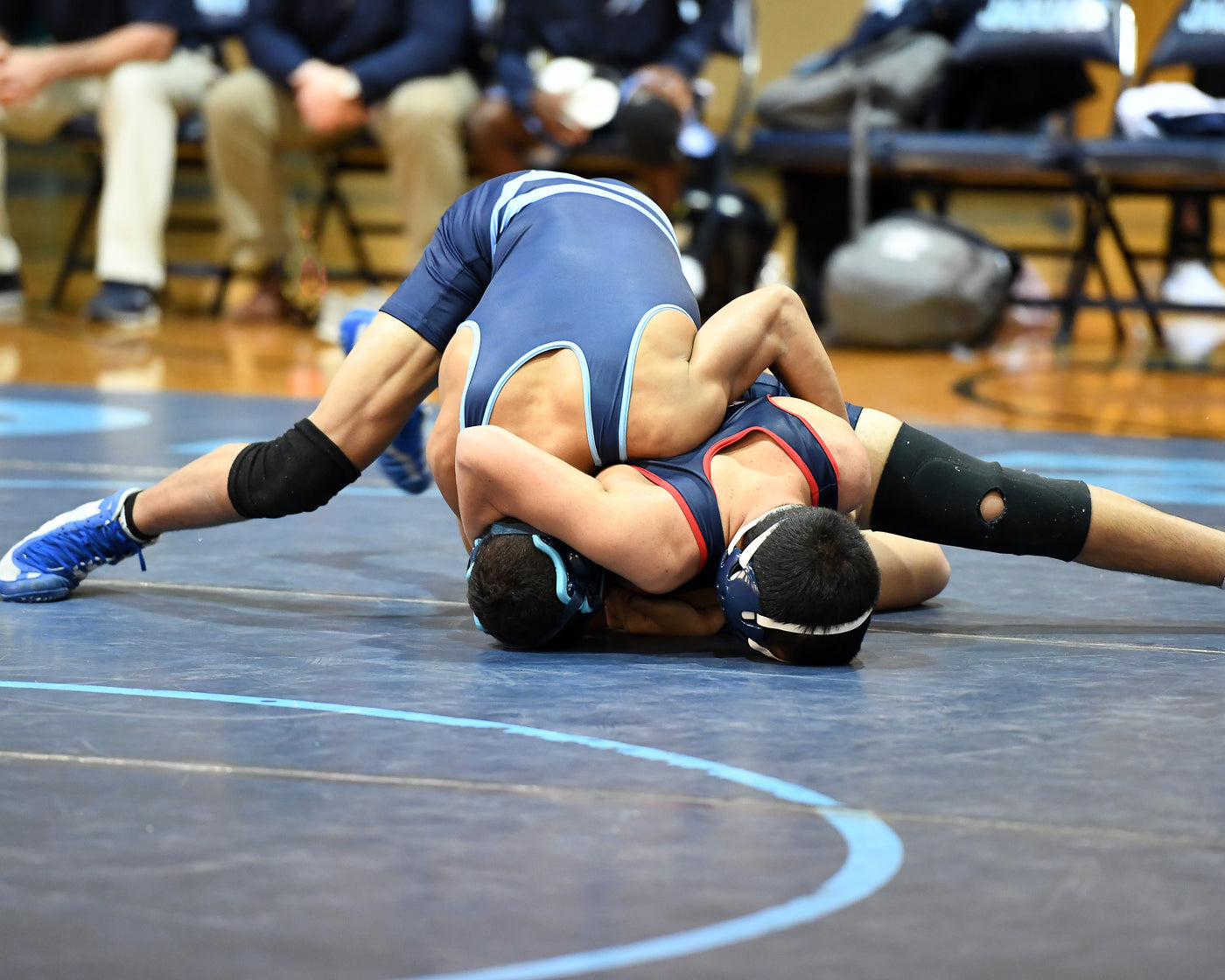Exercise Anatomy
LATERAL PRONE RAISE (REVERSE FLY)
The Lateral Prone Raise, also known as the Reverse Fly, is a targeted exercise for sculpting the muscles of the upper back and shoulders. This movement, performed lying face down, uniquely isolates the rear deltoids and upper back muscles, promoting improved posture and shoulder aesthetics. Incorporate this exercise for a quick and effective way to enhance shoulder definition and overall upper body strength.

Major Muscles and Actions Involved
During the Lateral Prone Raise, commonly known as the Reverse Fly, the primary joint action is shoulder horizontal abduction. This involves lifting the arms outward to the sides while lying face down. The exercise primarily targets the posterior deltoids, rhomboids, and trapezius muscles. The lateral motion engages the muscles of the upper back, contributing to improved shoulder aesthetics and overall upper body strength. The Lateral Prone Raise is particularly effective for isolating and strengthening the rear deltoids and promoting balanced muscle development in the

Safety First
For the Lateral Prone Raise (Reverse Fly), the most important safety consideration is protecting your shoulders and lower back by maintaining proper form and control throughout the movement. Start by lying face down on an incline bench or standing in a bent-over position, keeping your back straight and core engaged to support your lower back. As you raise the dumbbells out to the sides, focus on squeezing your shoulder blades together and avoid shrugging your shoulders or swinging the weights, as this can place undue stress on the shoulder joints and upper traps. Use a controlled motion and avoid going too heavy with the weights, as this can compromise your form and increase the risk of shoulder or back strain. Proper control and muscle engagement are key to safely performing this exercise.

Sports Uses
he Lateral Prone Raise, or Reverse Fly, offers direct benefits for athletes involved in sports that require upper body strength, shoulder stability, and balanced muscle development. Athletes participating in swimming, where strong posterior deltoids are crucial for efficient arm movements, can benefit from this exercise. Additionally, individuals engaged in sports like volleyball and basketball, which demand shoulder stability and power for overhead movements, can find the Lateral Prone Raise valuable. Incorporating this exercise into training routines can enhance shoulder aesthetics, reduce the risk of imbalances, and contribute to improved performance in activities requiring upper body strength and stability.
Exercise Tips
- Precise Technique: Execute the Lateral Prone Raise with controlled and deliberate movements. Keep a slight bend in the elbows and focus on lifting the arms parallel to the ground to effectively engage the rear deltoids and upper back muscles.
- Full Range of Motion: Emphasize a complete range of motion by lifting the arms laterally until they are in line with the torso. This ensures optimal muscle activation and contributes to improved shoulder development.
- Moderate Weight Selection: Begin with a light to moderate weight, especially if you are new to the exercise. Gradually increase the resistance as your strength improves to maintain proper form and prevent strain on the shoulder joints.
- Neutral Grip: Maintain a neutral grip with palms facing each other during the Lateral Prone Raise. This grip helps target the posterior deltoids and upper back muscles effectively.
- Variations for Progression: Explore variations such as incline bench Reverse Fly or using resistance bands to add variety and progression to your workout routine. These variations target the muscles from different angles, promoting overall upper back development.
Ensure a controlled breathing pattern throughout the exercise, inhaling before the lift and exhaling during the lowering phase, to enhance stability and control.
Lateral Prone Raise vs Lateral Dumbbell Arm Raise
Comparison the reverse fly and lateral arm raise exercises:
Muscles Targeted:
Reverse Fly: Primary focus on the posterior deltoids (rear shoulder muscles).
Also engages the trapezius, rhomboids, and upper back muscles.
Lateral Arm Raise (or Lateral Raise): Primarily targets the lateral deltoids (side shoulder muscles).
Engages the trapezius and other stabilizing muscles to a lesser extent.
Exercise Type:
Reverse Fly: Isolation exercise for the posterior deltoids and upper back.
Lateral Arm Raise: Isolation exercise for the lateral deltoids.
Movement:
Reverse Fly: Involves horizontally abducting the arms (moving them away from the body) against resistance.
Lateral Arm Raise: Involves lifting the arms laterally (sideways) from the sides of the body.
Equipment:
Reverse Fly: Typically performed using dumbbells, cables, or machines.
Lateral Arm Raise: Commonly done with dumbbells, cables, or resistance bands.
Body Position:
Reverse Fly: Often performed bent over, either standing or on an incline bench, to isolate the rear delts.
Lateral Arm Raise: Usually done standing or sitting, lifting the arms laterally.
Range of Motion:
Reverse Fly: Emphasizes the horizontal movement of the arms away from the body.
Lateral Arm Raise: Emphasizes the lateral movement of the arms away from the body.
Application:
Reverse Fly: Commonly included in back and shoulder workouts to target the rear delts and upper back.
Lateral Arm Raise: Often part of shoulder workouts to enhance shoulder width and target the lateral deltoids.
In summary, while both exercises contribute to shoulder development, the reverse fly specifically targets the rear deltoids and upper back, while the lateral arm raise focuses on the lateral deltoids. Including both exercises in your workout routine can provide comprehensive shoulder development.

Want to Learn More?
Try our premium ebook, Exercise Anatomy and Biomechanics: Ultimate Guide.
Satisfaction guaranteed.
